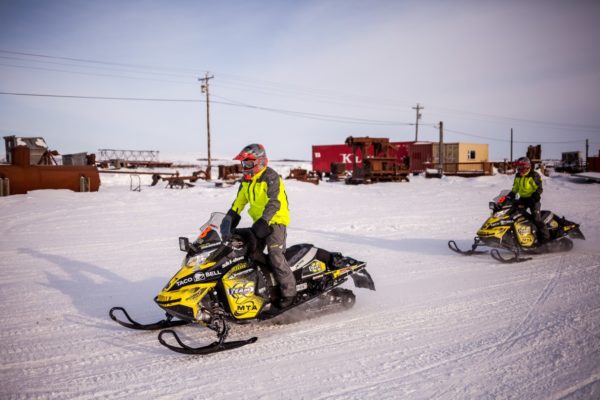
The 2021 Iron Dog will start in two weeks with an adjusted route and new COVID-19 precautions.
The world’s longest snow machine race will come to Nome as the usual halfway point.
23 teams are currently entered in the Pro Class, including the Nome duo of Jarvis and Jordan Miller. They are joined by reigning champs Tyler Aklestad and Nick Olstad, as well as previous winners Mike Morgan, Chris Olds and Todd Palin.
Also registered to race are the Hale brothers, rookies in this year’s Pro Class, but winners of last year’s Recreation Class.
“The teams will only have air support available to them from Big Lake to McGrath, that’s on the northbound. And then McGrath back to Big Lake southbound,” said Mike Vasser, Interim Executive Director of Iron Dog.
As of Monday, he said the race trail is set up and will be marked soon.

Racers will speed across 2,600 miles of Alaska terrain, through the usual 22 communities. Vasser said this year there will be new precautions for racers who reach the halfway point in Nome before starting the Kotzebue loop into the Northwest Arctic Borough.
“There won’t be a halfway banquet in Nome. The garage will be off-limits to everyone except for racers. There will be no mechanics,” Vasser said. “Racers can help other racers this year in the garage, and we will have COVID testing for the racers as they arrive.”
Besides skipping the halfway banquet and ceremony in Nome, this year’s race will also start and end in Big Lake to accommodate for COVID-19. Vasser said some of the layovers in McGrath, Galena, Nome and Kotzebue will involve regular testing for racers.
“We did lay out layover locations, and each community they’re staying in has different regulations, so we are still working to finalize those details in the next five to seven days,” he said. “I know it’s getting close to the start, but the communities are changing, it seems daily, based on the vaccination rate that is happening.”
According to Vasser, the plan is to have the group of Pro Class racers stay together during their layovers in communities along the trail.
This year’s Pro Class teams are scheduled to depart Big Lake on February 13, with the newly named Expedition Class leaving two days earlier. According to Vasser, the start will be dramatically reduced to only allow racers and their families to be present.
The Iron Dog race has only been canceled once in its almost 40-year history. In 2003, the race didn’t happen when warm weather and poor trail conditions sidelined the event.
Davis Hovey is a news reporter at KNOM - Nome.
Hovey was born and raised in Virginia. He spent most of his childhood in Greene County 20 minutes outside of Charlottesville where University of Virginia is located.
Hovis was drawn in by the opportunity to work for a radio station in a remote, unique place like Nome Alaska. Hovis went to Syracuse University, where he graduated with a Bachelor’s of Science in Broadcast Digital Journalism.




